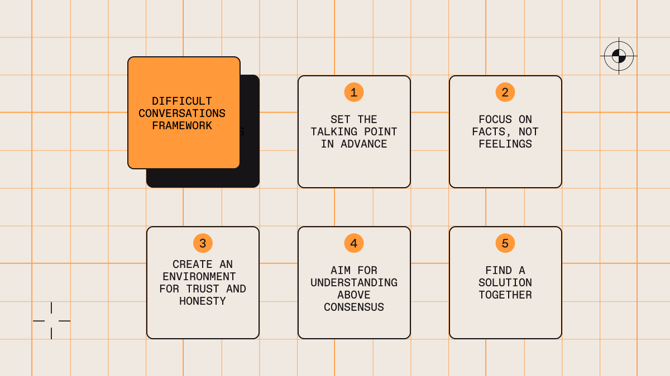When it comes to employee performance, effective performance management is truly the glue that holds it all together. Some might even say that employee performance management is the backbone of achieving organizational success. With the right strategies in place, organizations can boost employee performance, see greater productivity, and foster growth — and it all stems from good ol' communication.
When employees have regular check-ins, performance evaluations, and get meaningful feedback, they have a clearer understanding of their strengths and areas for improvement. With the right tools in hand and great support at their disposal, they can focus on building their skills, getting aligned, and contributing to achieving organizational goals. And that's a powerful thing.
Assess your organization’s employee experience in minutes

Implement the best tools and strategies for successful employee performance management
What is employee performance management?
By definition, performance management is a process by which an employer involves its employees in improving organizational effectiveness. As we touched on, it's achieved through continuous communication and feedback between managers and employees to ensure that employees are staying motivated and have everything they need to perform at their very best.
Employee performance management is a great way to keep employees engaged and aligned. It also enables managers to address and help remedy any issues that might affect employee performance. Only positive outcomes can come from it, so let's take a look at the how and why.
The trick here is to keep performance management continuous. When you have constant momentum, you make room for ongoing progress and improvement.
The benefits of performance management for employees and companies
When we say that only good things can come of solid a employee performance management process, we're talking major benefits like:
- Better goal alignment
- Improved engagement and satisfaction
- Increased productivity
- Reduced employee turnover
- A positive environment where everyone can excel
When you create a company culture of continuous improvement and offer ongoing development opportunities, you're cultivating a space that's designed to thrive. From stronger employee-manager relationships and less micromanagement to greater autonomy and accountability for all, the benefits of performance management are plentiful.
Putting the performance management process into play
Putting great employee performance management systems into play doesn't need to be complicated. In fact, a performance management cycle is a continuous six-step process that optimizes employee performance and growth:
Planning
Step one of the performance management process is planning. This is when you establish clear goals and expectations for your employees' performance. By setting objectives that align with your organization's vision and strategy, your team gains a solid sense of purpose and direction.
Monitoring
Based on the objectives that you created in step one, you'll then want to monitor performance. This is essential to ensuring that progress is being made toward these goals. Regular check-ins and feedback sessions allow managers to see what's working well and what isn't so that they can then provide guidance, support, and even recognition.
Developing
It's important to nurture growth and support potential. That's why this step in the performance management cycle focuses on fostering continuous growth and development. Offer learning and development opportunities, coaching, and mentoring to your employees so that they can continue to improve. And don't forget to keep up the regular feedback, goal-setting, and skill development along the way.
Rating
It's important to monitor performance in an objective way. This kind of performance assessment provides a structured framework for rating and measuring individual and team achievements so that you can then identify strengths and areas for improvement. Use rating scales, peer reviews, and self-assessments to get a 360-degree view of an employee's performance. The insights you can gain from this step help support the decision-making processes for the entire organization.
Rewarding
We can't stress enough how much employee recognition means to individuals and the organization as a whole. When people work hard to reach their goals, it always deserves recognition. Recognizing goal achievement and rewarding exceptional performance is a pivotal part of the performance management process, so remember to give credit for individual and team achievements and efforts to reinforce positive actions and motivate ongoing success.
Renewing
Last, but certainly not least in the performance management cycle is renewing. This final step of the performance management process involves assessing the outcomes and learnings from the previous cycle. Gather feedback, analyze the results, then implement effective changes so that you can adapt to the ever-evolving needs of your organization.
What's key in this entire process is to remember that there is always room for improvement, and that's a good thing! That's where growth and progress come from. Before you begin creating your own performance management strategy, let's get you equipped with some best practices.
Want a handy hack? Officevibe's performance management platform provides simple and intuitive tools to help you streamline this entire process, from one-on-one meetings and goals and OKRs to performance reviews and continuous performance management features.
Best practices for employee performance management
Just like any other area of business, there are effective best practices for performance management. We're here to help you navigate and understand them so that you can help your team level up and your organization thrive.
1. Set and communicate clear expectations and goals
Just like in sports, without a goalpost in sight, we have nothing to aim for. That's why setting clear and specific performance expectations for each employee is key. Having goals, objectives, and key performance indicators (KPIs) in place gives employees a clear understanding of what to aim for, what's expected of them, and how to shoot to score.
This makes each employee accountable, gives everyone something concrete to work towards, and even unites your team around a shared objective. There's power in numbers, so this kind of alignment paves the way for success.
Check out our practical goal-setting guide that's designed to help you take your team to new heights together.
2. Perform continuous feedback
Did we mention that communication is key? Giving regular, constructive feedback is one of the most essential best practices that should always be consistently implemented, no matter what. It's a powerful tool in helping employees know how they're performing, understand what's expected of them, identify their strengths, and take note of areas for improvement.
Constructive feedback takes the right method, the right tone, and the right timing. Be helpful and empathetic rather than critical, make feedback continuous rather than a sporadic one-off, and be ready to listen actively in return.
Take the guesswork out of mastering feedback with our 22 constructive feedback examples.
3. Implement multiple communication channels
By now, you're probably noticing a theme here. We've said it (more than) once, and we'll say it again (and again), that regular communication channels are essential in providing feedback and discussing performance. We're talking scheduled one-on-one meetings, frequent performance reviews, and informal check-ins sprinkled in the mix to provide guidance and address any concerns that may pop up.
Regular and real-time feedback shows employees that their managers are invested in them and want to help them succeed. What you get in return is more engaged, loyal employees. So keep that communication flowing!
4. Conduct regular performance reviews
For employees to progress, they need a clear path for navigation. And that's where regular performance reviews come in handy. Regular performance reviews can help managers assess employee progress, provide valuable feedback, and set new goals moving forward.
Remember that a performance review should always be objective, fair, and based on measurable criteria. The best way to do this right is to use a performance review platform to gather insights because, at the end of the day, data reigns supreme.
And managers need not go at it alone! Our guide on mastering employee performance reviews is here to help.
5. Recognize good performance
Once the goals have been set, the momentum is happening, the regular feedback is given, and your employees are performing, it's absolutely time to recognize them for their achievements. Recognizing and rewarding high-performing employees is essential. They're the ones showing up every day, keeping the wheels turning, and going above and beyond to help your organization succeed.
The beauty of employee recognition is that there are so many ways to give it. From loud and proud public recognition to kind words from peer to peer to offering career advancement opportunities, it's always a good idea to give someone their shine, and there are many ways to improve how it's given in the workplace.
Need the inspiration to find the right words? Browse through our examples of employee recognition messages and make them your own.
6. Create performance improvement plans
Fail to plan, and plan to fail, they say. The same goes for performance management. Performance improvement plans pave the way for success, so implementing them is a must if you want to keep high performers rolling, and to help under-performers step up.
That's where a performance improvement plan (PIP) comes in. They can help you track and guide work performance, identify areas where employees need to correct the course and offer solutions to improve and get back on the road to success. For every problem, there's a solution and it usually comes in the form of clear expectations and support to help employees achieve improvement goals.
7. Provide learning and development opportunities
Never stop learning. It's life advice, and it's sound performance management advice too. Providing employees with opportunities for learning, development, and career growth open the doors to enhancing their skills, expanding their knowledge, and putting them on the path to even greater success.
Offer training programs and workshops, provide mentoring, and always encourage growth. It helps employees flourish, feel valued, and stay motivated. It also gives them an even greater sense of purpose within your organization, which is essential for employee retention.
Did you know? Our learning management system is designed to build, manage, and monitor employee training to help both your employees and the organization grow. It's worth trying!
8. Support career development
Expanding on our last best practice, supporting each employee's career ambitions is a key factor in helping to improve their performance, stay motivated, and even grow within the company. Tapping into this growth starts with a conversation designed to help guide them toward their career goals and aspirations.
The best way to have this kind of one-on-one conversation is to come prepared, so we've put together a handy guide to help you craft an effective career development talk.
9. Train managers to be coaches
Just like a coach leads a sports team, a manager should be able to provide the same kind of motivational guidance to their own team of employees. Coaching and mentoring are powerful tools for improving employee performance and facilitating professional development, but we can't expect all managers to be automatically equipped and able to lead in the same way. It's important to understand that everyone has a different leadership style, and it's a learning process for everyone.
What we do know is that a coaching style is an effective one. It's one that prioritizes empowering employees, giving them a sense of accountability and ownership, and pushing them toward embracing opportunities. Coaches encourage employees to grow, and this kind of leader helps build a loyal, productive, and focused team.
10. Use performance management technology
Now that we've touched on all of the human elements of employee performance management, we can't forget the technology side. Employee performance management tools like Officevibe can help you streamline your performance management systems, facilitate goal tracking, manage your feedback loop, and analyze performance management data.
Don't underestimate the value employee performance management software brings to the table. Get ready, set goals, and prepare to soar!
Reach new heights with outstanding performance management
By now, we've gathered that effective employee performance management capabilities and great communication go hand in hand. We've learned that goal-setting, constructive feedback, frequent employee recognition, and ample opportunities all contribute to the success of your organization, and it all starts with getting prepared.
When done right, continuous employee performance management is a powerful thing. When you have continuous feedback and regular check-ins, it really helps to keep everyone aligned and powering ahead toward employee growth and organizational success. So keep that performance management momentum going!
Equip HR and managers with tools to engage, recognize, and drive performance.




